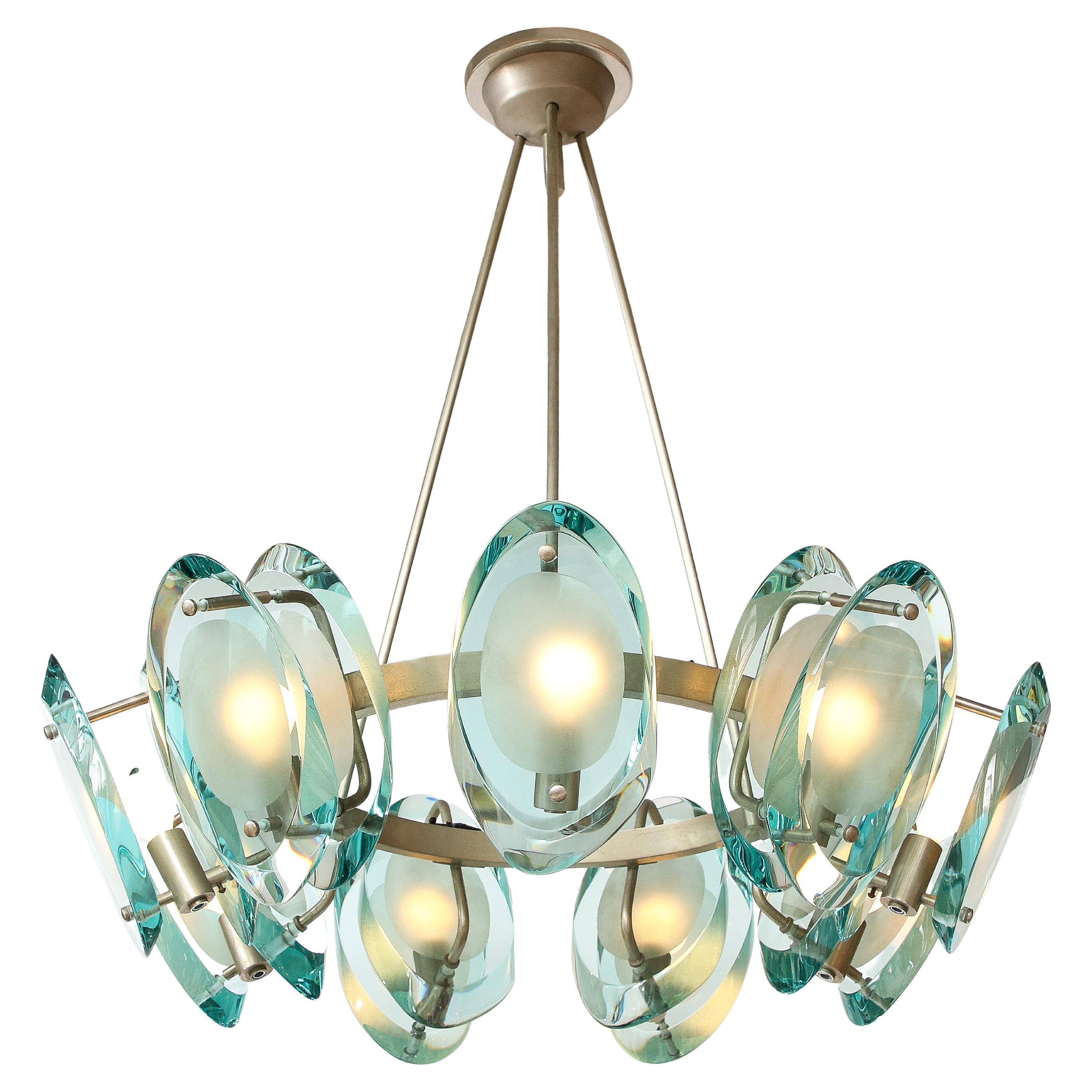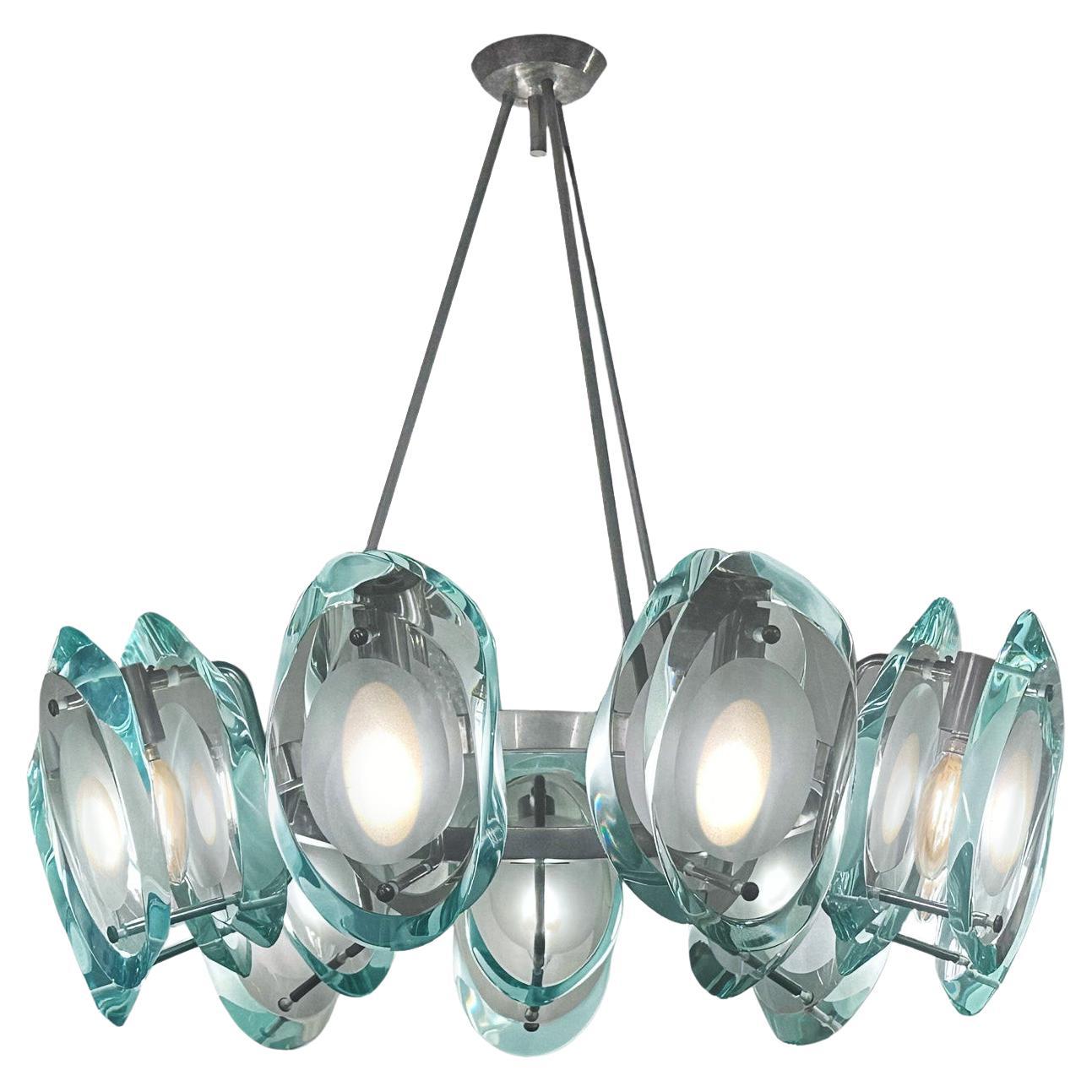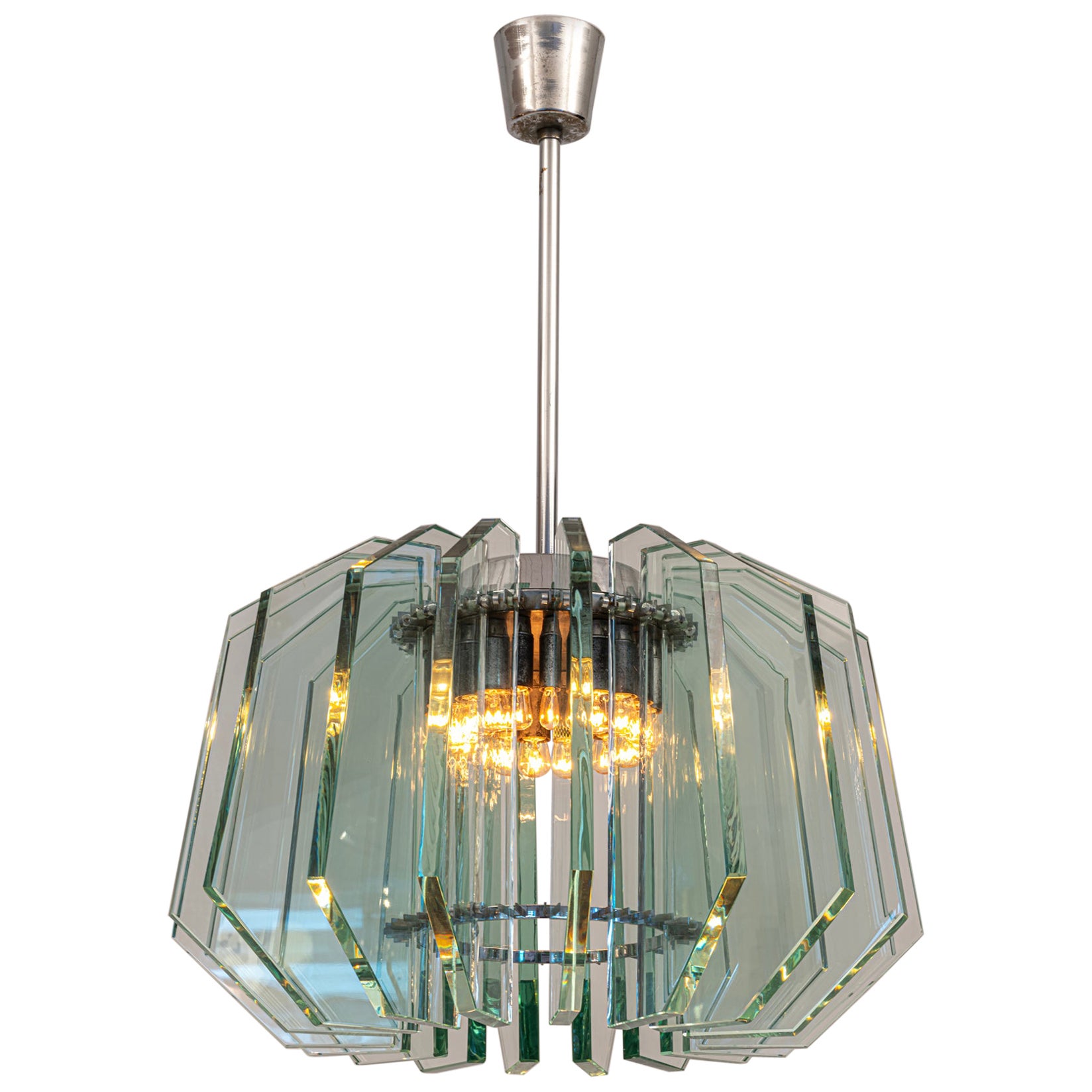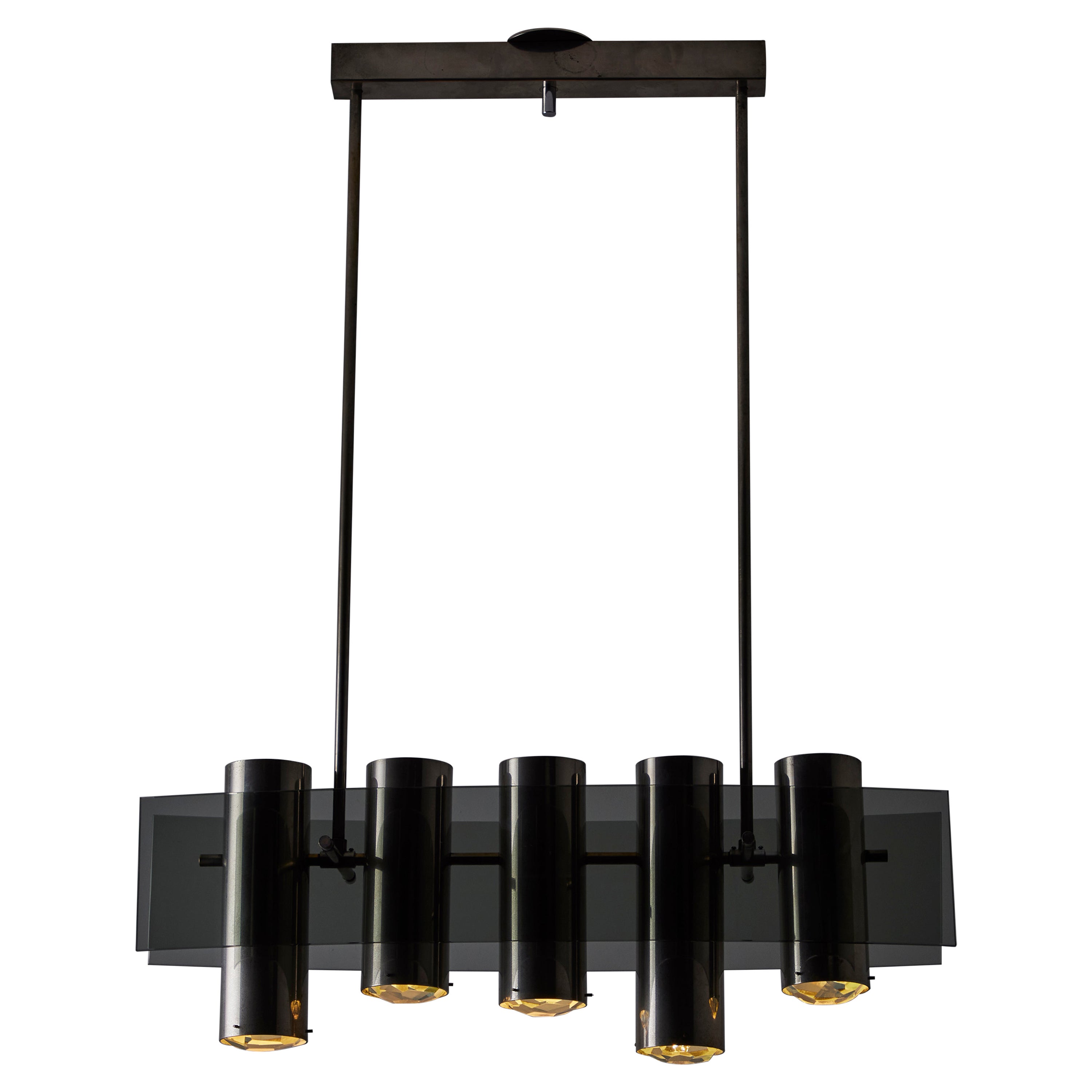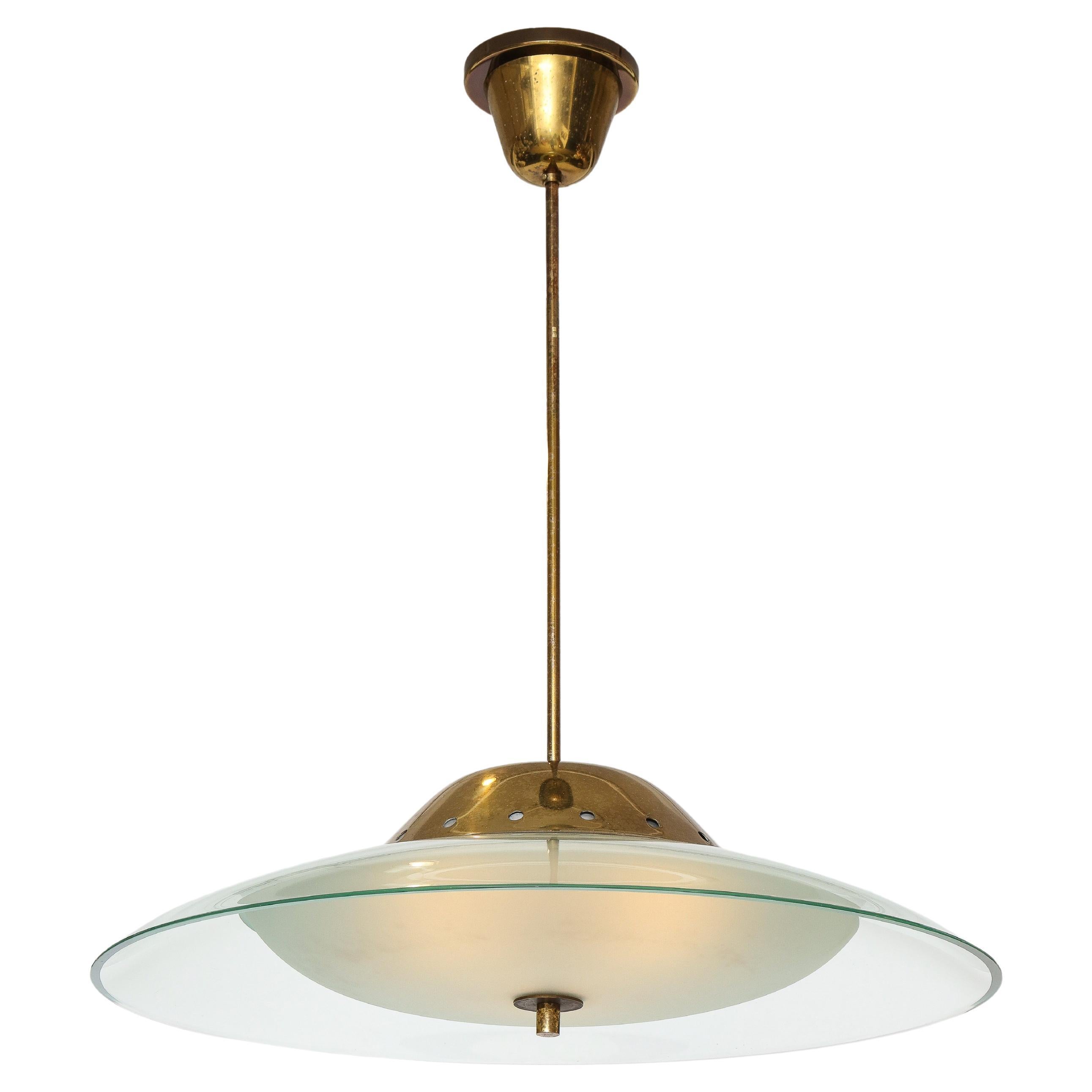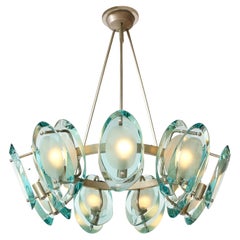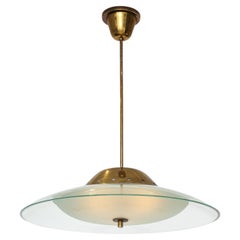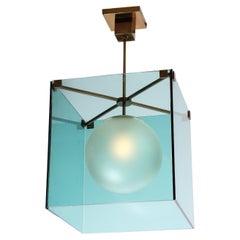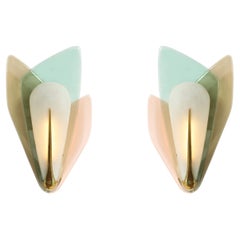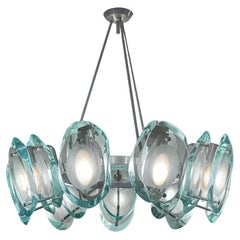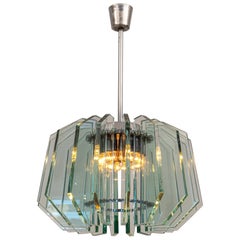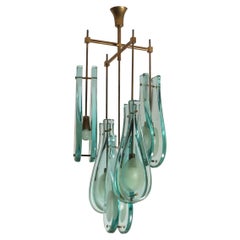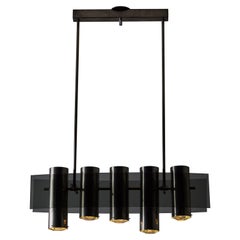Max Inrgand for Fontana Arte Rare Chandelier Model 2338
About the Item
- Creator:Max Ingrand (Designer),Fontana Arte (Manufacturer)
- Design:
- Dimensions:Height: 41 in (104.14 cm)Diameter: 17.75 in (45.09 cm)
- Power Source:Hardwired
- Style:Mid-Century Modern (Of the Period)
- Materials and Techniques:
- Place of Origin:
- Period:
- Date of Manufacture:1960s
- Condition:Rewired: In very good original condition with no chips to the glass, rich patina to brass, and recently rewired to U.S. standards including UL listing and custom ceiling plate. Wear consistent with age and use.
- Seller Location:New York, NY
- Reference Number:Seller: FON4341stDibs: LU2917336001362
Glass Drop Pendant Model 2259
Combat operations during World War II destroyed the stained-glass windows of churches around France. Max Ingrand (1908–69), a French designer who spent time as a POW, would become a leader in their restoration and, in turn, bring his expressive vision to some of the most inventive postwar glass objects, including the striking 1962 Glass Drop Pendant model 2259.
Born in Bressuire, Ingrand spent some of his childhood in Chartres, where he was drawn to the medieval stained glass in the city’s famed cathedral. He later studied at the École nationale supérieure des beaux-arts and École nationale supérieure des arts décoratifs in Paris, training with stained-glass artist Jacques Grüber and architect Charles Lemaresquier. Inspired by the Middle Ages, Ingrand used modern materials to evoke the past while crafting fresh designs in bright colors that would stand the test of time. As his contemporaries were shifting toward abstraction, Ingrand drew on figurative traditions and new geometric forms in his dynamic windows.
World War II interrupted Ingrand’s burgeoning career. Drafted into service, he was captured by the Germans and held in a prison camp. During this captivity, he met Ivan Peychès, who would go on to direct the glass manufacturer Saint-Gobain. After the war, Peychès hired Ingrand to replace and restore church windows damaged as a result of military operations. Ingrand’s success led to international work in churches, hotels and other buildings.
From 1954 to 1967, Ingrand was the artistic director of Fontana Arte — founded in the 19th century by Luigi Fontana in Milan — of which Saint-Gobain was a parent company. There, he focused on a more domestic scale and brought the historic Italian glass company into the industrial age.
Ingrand’s Glass Drop Pendant model 2259 — also known as the Drop Ceiling Light — features two thick slices of teardrop-shaped glass, each with a small area of frosting to diffuse the illumination from the interior bulb. The heaviness of the glass is countered by two brass pins, which elegantly connect the pieces. While he innovated with industrial production at Fontana Arte, Ingrand’s attention to craft is prominent in his popular designs, such as the Fontana table lamp. Fontana Arte continues to produce and update his designs today, adding advancements such as LED lighting. As with his stained-glass windows, he viewed these objects in relation to space. For Ingrand, light was “a means to breathe life into an entire architecture.”
Fontana Arte
Best known for its elegant and innovative vintage lighting fixtures, the Milan-based firm Fontana Arte pioneered one of the key features of 20th-century and contemporary Italian design: the union of artistry and industry wrought by partnerships between creative talents — chiefly architects — and entrepreneurial businesses. Fontana Arte is further distinguished by having had as artistic director, in succession, four of Italy’s most inventive modernist designers: Gio Ponti, Pietro Chiesa, French transplant Max Ingrand and Gae Aulenti.
The bread and butter of the glassmaking company that Luigi Fontana founded in 1881 was plate-glass panels for the construction industry. In 1930, Fontana met Ponti — then the artistic director of the Richard Ginori ceramics workshop and the editor of the influential magazine Domus — at a biannual design exhibition that became the precursor to today’s Milan Design Triennale, and the two hatched an idea for a furniture and housewares firm. Fontana Arte was incorporated in 1932 with Ponti as its chief of design. He contributed several lamps that remain among the company’s signature works, including the orb-atop-cone Bilia table lamp and the 0024 pendant — a stratified hanging sphere.
The following year, Fontana Arte partnered with the influential Milan studio glassmaker and retailer Pietro Chiesa, who took over as artistic director. Chiesa’s designs for lighting — as well as for tables and items including vases and ashtrays — express an appreciation for fluidity and simplicity of line, as seen in works such as his flute-shaped Luminator floor lamp and the 1932 Fontana table — an arched sheet of glass that is held in the permanent collection of the Museum of Modern Art.
Six years after Chiesa’s 1948 death, the École des Beaux Arts–trained Max Ingrand took over as head of design at Fontana Arte. Ingrand brought a similarly expressive formal sensibility to wares such as lamps and mirrors, but he also had a masterful eye for the manipulation of glass surfaces — whether they be cut, frosted, acid-etched or sand-blasted. His classic design is the Fontana table lamp of 1954, which has a truncated cone shade and curved body, both of which are made of pure, chic white-frosted glass.
Following Ingrand, the often-audacious Italian architect Gae Aulenti served as the company’s artistic director from 1979 to 1996, and while she generally insisted that furnishings take second place aesthetically to architecture, she made an exception for Fontana Arte pieces such as the Tavolo con Ruote series of glass coffee and dining tables on wheels, bold lighting pieces such as the Parola series and the Giova, a combination flower vase and table lamp. As a key incubator of modern design under Aulenti’s tenure, Fontana Arte remained true to its long-held commitment — creating objects that have never been less than daring.
Find vintage Fontana Arte lighting fixtures such as pendants, table lamps and more on 1stDibs.
- ShippingRetrieving quote...Shipping from: New York, NY
- Return Policy
More From This Seller
View AllVintage 1950s Italian Mid-Century Modern Chandeliers and Pendants
Brass
Vintage 1960s Italian Mid-Century Modern Chandeliers and Pendants
Crystal, Brass
Vintage 1960s Italian Mid-Century Modern Chandeliers and Pendants
Metal
Vintage 1950s Italian Mid-Century Modern Chandeliers and Pendants
Crystal, Brass
Vintage 1960s Italian Mid-Century Modern Chandeliers and Pendants
Brass
Vintage 1960s Italian Mid-Century Modern Chandeliers and Pendants
Brass
You May Also Like
Vintage 1950s Italian Mid-Century Modern Chandeliers and Pendants
Nickel
Vintage 1960s Italian Mid-Century Modern Chandeliers and Pendants
Nickel
Vintage 1960s Italian Mid-Century Modern Chandeliers and Pendants
Brass
Vintage 1960s Italian Mid-Century Modern Chandeliers and Pendants
Steel, Brass, Aluminum
Vintage 1950s Italian Mid-Century Modern Chandeliers and Pendants
Crystal, Brass
Vintage 1950s Italian Mid-Century Modern Chandeliers and Pendants
Brass
